Gas tank filler neck problems can disrupt the smooth operation of your vehicle’s fueling system, leading to frustrating symptoms and potential safety concerns. Recognizing the signs of a malfunctioning filler neck is crucial for prompt intervention.
In this article, we’ll explore common symptoms such as difficulty filling the tank, fuel odors, and visible leaks. Additionally, we’ll delve into the underlying causes behind these issues, ranging from corrosion to incorrect fueling practices.
Armed with an understanding of the symptoms, we’ll then guide you through potential DIY fixes and discuss when it’s time to seek professional assistance. Whether you’re contending with a faulty gas cap or addressing more complex filler neck issues, this comprehensive guide will empower you to navigate the diagnosis and resolution of gas tank filler neck problems effectively.
What Causes Gas Tank Filler Neck Issues?
01. Corrosion and Rust
One primary cause of filler neck issues is corrosion and rust. Over time, exposure to moisture, road salts, and other environmental elements can lead to the formation of rust on the filler neck.
Corrosion weakens the metal structure, making it susceptible to cracks and leaks. Regular exposure to these corrosive elements, especially in regions with harsh climates, can expedite the deterioration process.
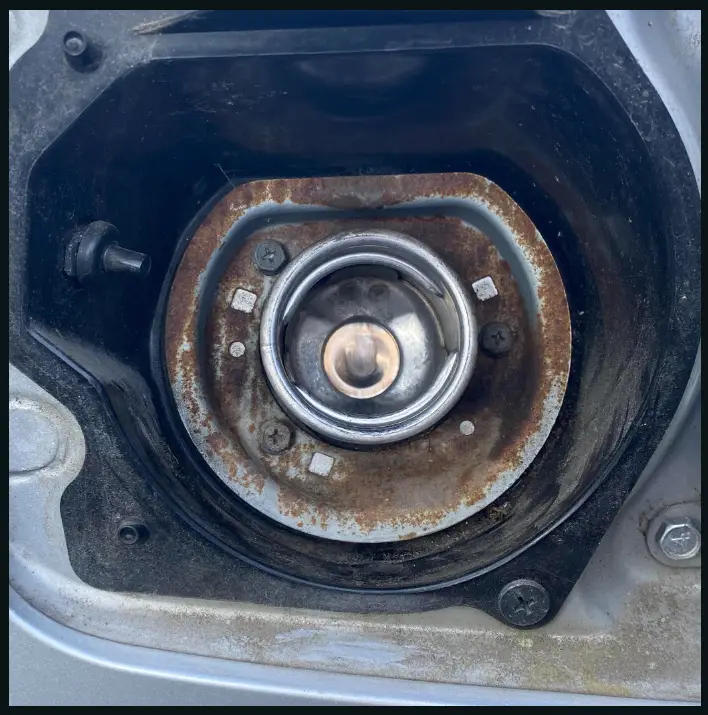
02. Physical Damage:
Physical damage is another significant contributor to filler neck problems. Accidental impacts, whether from minor collisions or abrasive contact with objects, can compromise the integrity of the filler neck.
Even a small dent or deformation can weaken the structure, potentially leading to fuel leaks. This risk is heightened in situations where the filler neck is exposed and lacks sufficient protection.
02. Poor Quality Fuel:
The quality of the fuel used in a vehicle can impact the condition of the filler neck. Low-quality or contaminated fuel may contain impurities that accelerate corrosion and contribute to the degradation of the filler neck material.
Over time, exposure to such impurities can compromise the structural integrity of the filler neck, leading to leaks or other issues.
03. Age and Wear:
Like many components in a vehicle, filler necks are subject to wear and tear with age. The materials used in the construction of the filler neck may deteriorate over time, becoming brittle or losing their original strength.
As the filler neck ages, the risk of cracks and leaks increases. Regular inspections and proactive maintenance can help address age-related wear before it develops into a significant problem.
04. Incorrect Fueling Practices:
Improper fueling habits can contribute to filler neck issues. Forcefully inserting the fuel nozzle, using excessive force during refueling, or overfilling the tank can cause stress on the filler neck.
Over time, this stress may result in deformation, cracks, or other structural damage. Educating drivers about correct fueling practices can help prevent unnecessary wear and tear on the filler neck.
Understanding these causes is crucial for both vehicle owners and mechanics. Regular inspections, preventive maintenance, and adopting proper fueling practices can collectively contribute to the longevity and optimal performance of the gas tank filler neck.
How Can You Identify Filler Neck Problems? (Symptoms)
Identifying filler neck problems early on is essential to prevent more significant issues and ensure the safety and functionality of your vehicle. Here are five symptoms that can indicate potential filler neck problems:
01. Difficulty Filling the Tank:
One of the primary signs of a filler neck issue is difficulty filling the fuel tank. If you find that the fuel nozzle frequently clicks off, even when the tank is not full, or if fueling is slower than usual, it could indicate an obstruction or a kink in the filler neck. This symptom suggests that the normal flow of fuel into the tank is impeded.
02. Fuel Odor Around the Vehicle:
A noticeable fuel odor in the vicinity of your vehicle, especially when you are near the gas cap or filler neck area, may indicate a potential leak.
Leaks can occur due to cracks or damage to the filler neck, allowing fuel vapors to escape. It’s crucial to address any fuel odor promptly, as it not only signifies a potential safety hazard but also indicates a loss of fuel efficiency.

03. Visible Fuel Leaks Under the Vehicle:
If you observe puddles or spots of fuel under your vehicle after refueling, it’s a clear sign of a filler neck issue.
Inspect the area around the filler neck for any visible signs of leaks. Leaks can occur due to cracks, corrosion, or damaged seals in the filler neck assembly. Promptly addressing leaks is vital to prevent fire hazards and ensure environmental safety.
04. Unusual Sounds During Refueling:
Unusual sounds, such as gurgling or hissing, during the refueling process can be indicative of a problem with the filler neck.
These sounds may suggest air escaping or fuel struggling to flow into the tank due to an obstruction or blockage. Any unusual noises during refueling should be investigated to prevent further damage to the filler neck.
05. Check Engine Light Illumination:
While the check engine light can indicate a range of issues, it may also illuminate due to problems with the fuel system, including the filler neck. Modern vehicles are equipped with onboard diagnostics that can detect anomalies in the fuel system.
If the check engine light is accompanied by symptoms like those mentioned above, it’s advisable to have the vehicle inspected by a professional mechanic to pinpoint the specific issue.
If you experience any of these symptoms, it’s crucial to address them promptly. Ignoring filler neck problems can lead to more severe issues, including fuel leaks and potential safety hazards. Seeking the expertise of a qualified mechanic for a thorough inspection and necessary repairs is recommended.
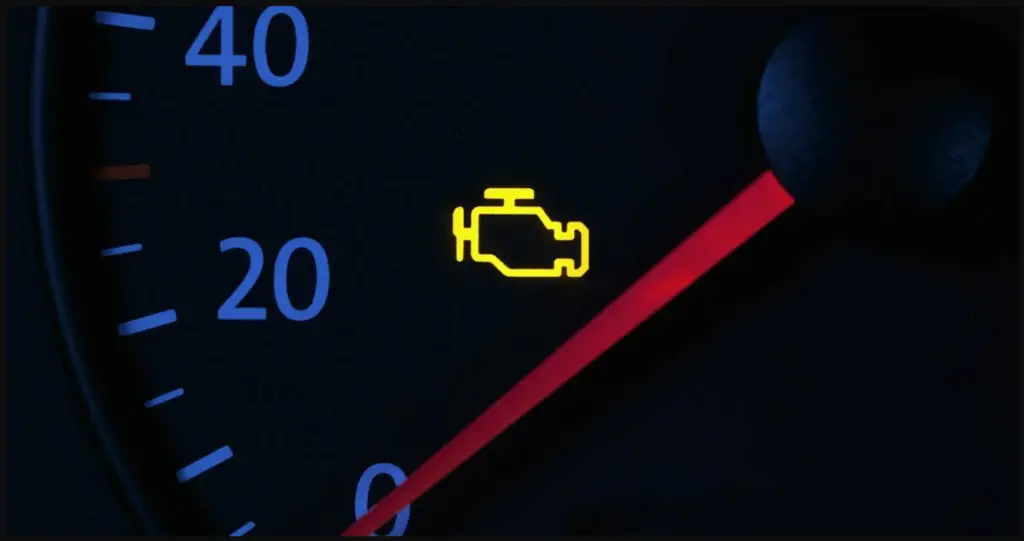
Can Filler Neck Problems Be Fixed with DIY Solutions?
Some filler neck problems can be addressed with DIY solutions, depending on the nature and extent of the issue. Here are common filler neck problems and potential DIY fixes:
Replacing a Damaged Gas Cap
Sometimes, a faulty gas cap can cause issues with the filler neck. If the cap is not sealing properly, it can lead to fuel vapors escaping and triggering the check engine light.
DIY solution: Purchase a replacement gas cap that is compatible with your vehicle’s make and model. Ensure it is tightly sealed during installation.
Clearing Debris or Obstructions
Debris or obstructions in the filler neck can impede the flow of fuel.
DIY solution: Use compressed air or a vacuum to clear any visible debris. Be cautious not to push the obstruction further into the fuel system. If the obstruction is severe or located deeper in the system, professional assistance may be necessary.
Why Does The Gas Coming Out Of Exhaust? All You Need To Know
Enginerides.com
Fixing Small Cracks with Epoxy
Small cracks or leaks in the filler neck may be repairable with epoxy.
DIY solution: Clean the area around the crack thoroughly, apply epoxy designed for metal surfaces, and let it cure according to the product instructions.
While this may provide a temporary fix, it’s crucial to monitor the repair and consider professional assistance for a more permanent solution.
Securing Loose or Damaged Hoses
In some cases, filler neck issues may be related to loose or damaged hoses connected to the neck.
DIY solution: Tighten loose hose clamps or replace damaged hoses if visible wear is detected. Ensure that hoses are securely connected to prevent fuel leaks.
Inspecting and Tightening Connections
Loose or improperly tightened connections can contribute to filler neck problems.
DIY solution: Inspect the connections between the filler neck and the fuel tank. Tighten any loose bolts or connections carefully. Exercise caution not to overtighten, as this may cause additional damage.
While these DIY solutions can be effective for certain filler neck issues, it’s essential to recognize the limitations of self-repairs. Complex problems, extensive damage, or situations where safety is a concern may require professional assistance.
If the DIY fixes do not resolve the issue or if you’re unsure about the extent of the problem, it’s advisable to consult with a qualified mechanic. A professional inspection can identify hidden issues and ensure that the filler neck is functioning correctly to maintain the safety and efficiency of your vehicle.
What are Replacement replacement options for Damaged Filler Necks: OEM vs. Aftermarket?
When considering replacement options for a damaged filler neck, vehicle owners often have two main choices: Original Equipment Manufacturer (OEM) parts or aftermarket parts. Each option has its advantages and considerations:
OEM (Original Equipment Manufacturer) Parts
- Advantages:
- Quality Assurance: OEM parts are designed and produced by the same manufacturer that made the original parts for the vehicle. This ensures a high level of quality and compatibility.
- Exact Fit: OEM parts are engineered to match the specifications of the original filler neck, providing an exact fit without modification.
- Manufacturer Warranty: Some OEM parts come with a warranty from the vehicle manufacturer, giving consumers added peace of mind.
- Considerations:
- Cost: OEM parts are often more expensive than their aftermarket counterparts. The higher cost is attributed to the assurance of quality and the brand association.
Aftermarket Parts
- Advantages:
- Cost-Effective: Aftermarket parts are generally more budget-friendly compared to OEM parts, making them an attractive option for cost-conscious consumers.
- Variety of Options: Aftermarket manufacturers often offer a wide range of filler neck options, providing consumers with more choices in terms of materials, design, and features.
- Availability: Aftermarket parts may be more readily available than OEM parts, especially for older or less common vehicle models.
- Considerations:
- Quality Varies: The quality of aftermarket parts can vary significantly. While some aftermarket parts meet or exceed OEM standards, others may be of lower quality.
- Fitment Issues: Some aftermarket parts may require slight modifications for proper fitment. It’s crucial to ensure compatibility with the specific vehicle’s make and model.
- Warranty Variances: Aftermarket parts may come with a warranty from the manufacturer, but the coverage can vary. Consumers should carefully review warranty terms before purchasing.
Choosing Between OEM and Aftermarket
- For Warranty and Exact Fit: If preserving the original quality and fit of the vehicle is a top priority, and if budget constraints allow, opting for an OEM part is a reliable choice.
- For Cost Savings and Variety: If cost is a significant factor or if you are looking for a broader range of options, aftermarket parts may be a suitable alternative. However, thorough research and consideration of customer reviews are essential to ensure you choose a reputable aftermarket brand.
Why Does The Car Suddenly Smells Like Garbage? And How To Fix It ASAP
enginerides.com
Ultimately, the decision between OEM and aftermarket replacement filler necks depends on individual preferences, budget considerations, and the importance placed on factors such as warranty, fitment, and quality.
Can you drive with a bad fuel tank filler neck?
Driving with a bad fuel tank filler neck is not advisable. A compromised filler neck can lead to fuel leaks, posing safety hazards and environmental risks.
Additionally, it may trigger the check engine light and impact your vehicle’s performance. Immediate repairs or replacement by a qualified mechanic are recommended to ensure safe and efficient operation.
How much does it cost to replace a fuel filler neck?
Replacing a fuel filler neck can vary in cost depending on several factors such as the make and model of your vehicle, the complexity of the replacement, and regional labor costs.
Generally, the parts themselves can range from $50 to $250. Labor costs can add an additional $100 to $200, depending on the hourly rates of the service provider and the time required for the replacement.
For high-end or luxury vehicles, these costs can be significantly higher. It’s also worth noting that prices may vary based on geographic location and the specific auto repair shop you choose. It’s recommended to get a few quotes from different mechanics to compare prices and services. Keep in mind that choosing a reputable service provider is important for ensuring the quality and safety of the repair.
Some related FAQs
Why is gas coming out of the filler neck?
Gas may escape from the filler neck due to a damaged or improperly sealed gas cap, a cracked filler neck, or issues with the evaporative emissions system.
These problems can compromise the containment of fuel vapors, leading to leaks. Prompt inspection and repairs are essential to prevent safety hazards and ensure proper vehicle function.
Can fuel filler neck cause EVAP leak?
Yes, a damaged or malfunctioning fuel filler neck can contribute to an EVAP (Evaporative Emissions Control System) leak. Cracks or loose connections in the filler neck can allow fuel vapours to escape, disrupting the system’s ability to contain and manage evaporative emissions. Addressing filler neck issues is crucial for EVAP system integrity.
What happens if fuel tank is not closed properly?
If a fuel tank is not closed properly, it can lead to several issues. Fuel vapors may escape, causing environmental harm and triggering the check engine light.
Additionally, an improper seal can compromise fuel system pressure, potentially affecting engine performance, fuel efficiency, and triggering the vehicle’s evaporative emissions control system.

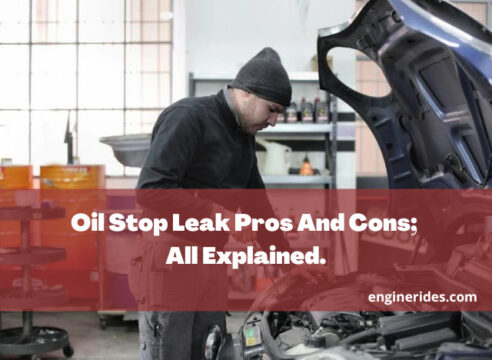
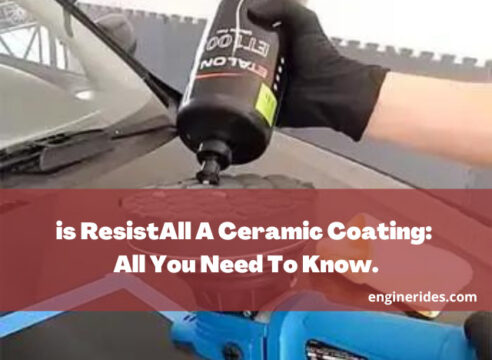
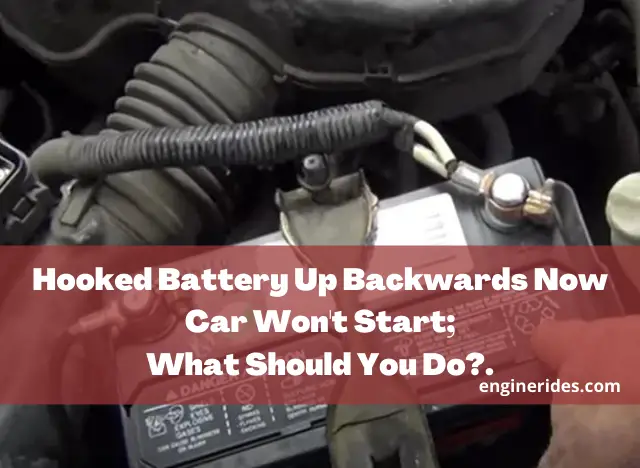
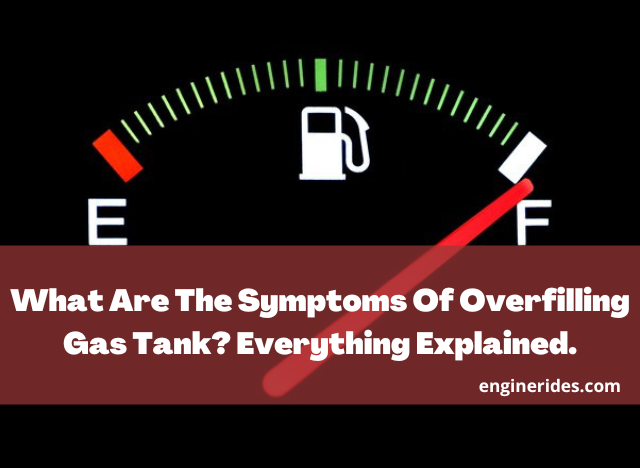
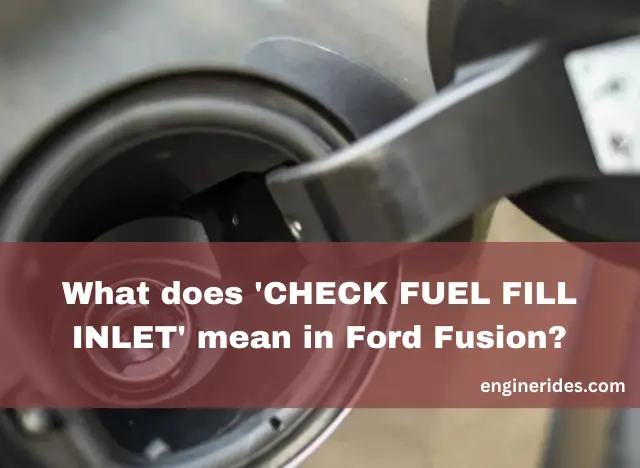

One Comment